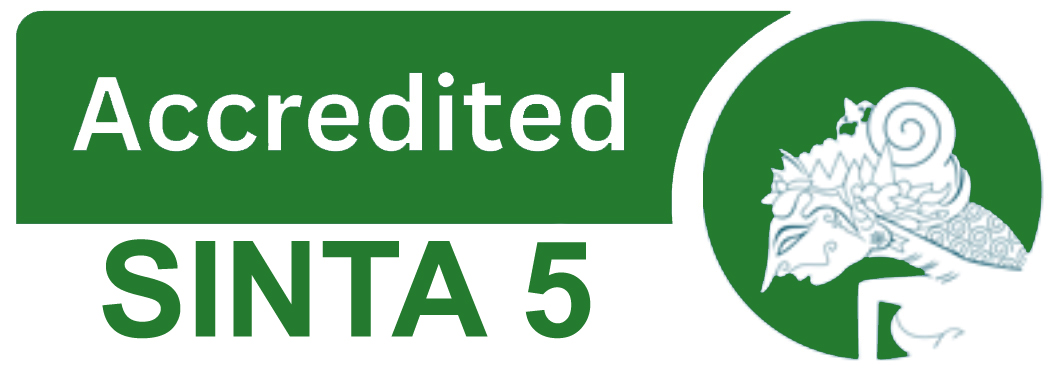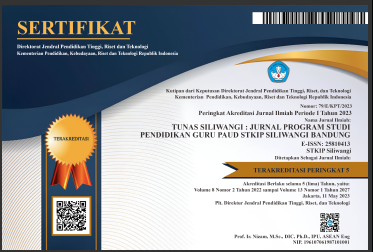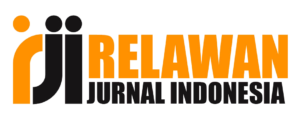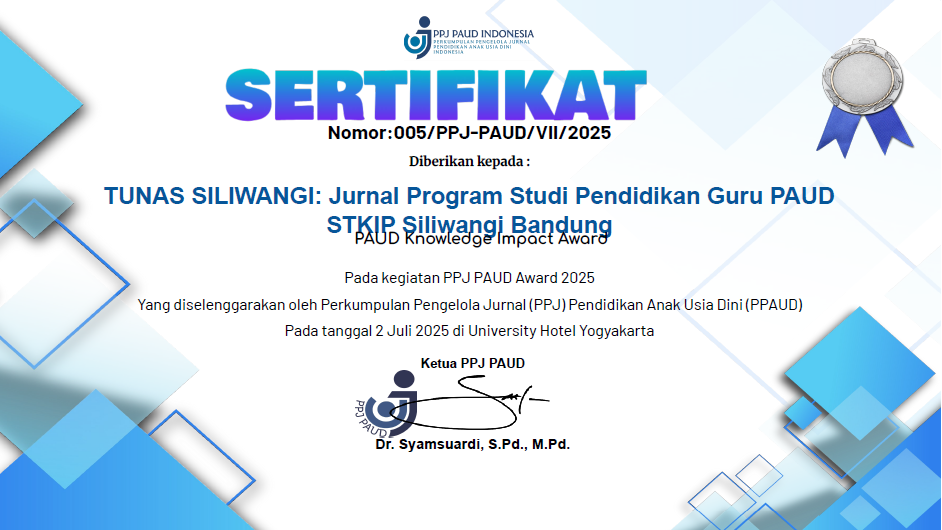The influence of animated media on children's prosocial behavior
DOI:
https://doi.org/10.22460/ts.v11i2.6653Keywords:
Prosocial Behavior , Animated Media , Children Aged 5–6 YearsAbstract
The problem addressed in this study is the low level of prosocial behavior among children aged 5–6 years, caused by less interactive learning methods. The purpose of this research is to determine the effect of animated media on children’s prosocial behavior. This study employs a quantitative approach using an experimental method (one-group pre-treatment and post-treatment design). The sample consists of 15 children selected through purposive sampling techniques. Data were collected through observation and analyzed using an N-Gain score of 0.52 (moderate category) and a Paired Samples T-test (Sig. 0.000 < 0.05). These results indicate a significant difference between pre-treatment and post-treatment. The alternative hypothesis (Ha) is accepted, meaning that animated media has an effect on children’s prosocial behavior
References
Arikunto, S. (2019). Research Procedures: A Practical Approach. PT Rineka Cipta, Jakarta.
Baron, R. A., & Byrne, D. (2012). “The Development of Prosocial Behavior” in The Oxford Handbook of Prosocial Behavior, Social Psychology (9th ed.). England: Pearson.
Retrieved from https://libgen.lc/ads.php?md5=fb4529a0f5108c336fe5940e906b2a48
Daryanto. (2019). The Basic Concepts of Learning Media. Learning Media for the Teaching and Learning Process. Buana Gender: Journal of Gender and Child Studies.
https://doi.org/10.22515/bg.v5i2.2819
Desmita. (2018). Factors Influencing Prosocial Behavior: Social and Emotional Development. Bandung: Alfabeta.
Eisenberg, N., Reykowski, J., & Staub, E. (Eds.). (2016). Social and Moral Values: Individual and Societal Perspectives. Routledge.
https://doi.org/10.1542/peds.2011-1066
Sofia, A., Irzalinda, V., & Prawisudawati Ulpa, E. (2020). Factors Contributing to the Social Development of Early Childhood. Journal of Educational Science Pedagogika.
Retrieved from http://ejurnal.fip.ung.ac.id/index.php/PDG
Catron, C., & Allen, J. (2019). Early Childhood Curriculum: A Creative Play Model (2nd ed.). Prentice Hall.
Nawangsasi, et al. (2023). “The Effect of Project-Based Learning on the Socio-Emotional Development of Children Aged 5–6 Years.” Journal of Early Childhood Education, University of Lampung.
Hasanah, N., & Drupadi, R. (2020). Prosocial Behavior of Children During the Covid-19 Pandemic. Buana Gender:JournalofGenderandChildStudies.
https://doi.org/10.22515/bg.v5i2.2819
Sugiana, S., & Formen, A. (2020). Personal Teacher Efficacy and General Teacher Efficacy in Character Education in Reference to Age, Highest Education, and Teaching Experience. Indonesian Journal of EarlyChildhoodEducationStudies.
https://doi.org/10.15294/ijeces.v4i1.9454
Salkind, N. J. (2019). Development and Maintenance of Prosocial Behavior: International Perspectives on Positive Morality (Vol. 31). New York: Springer Science & Business Media.
Suryanto, et al. (2022). Factors Affecting Prosocial Behavior. Journal of Early Childhood Education.
http://ejurnal.fip.ung.ac.id/index.php/PDG
Fitria. (2020). Audio-Visual Media and Its Use in the Learning Process. Indonesian Education Journal.
https://doi.org/10.14744/nci.2022.55649
Kurniawati, A. B., Safitri, L. A., Guru, P., Anak, P., Dini, U., Lampung, U., & Semarang, U. N. (2024). The Effect of Morally-Loaded Animated Videos on Independence in Children Aged 5–6 Years. Journal of Early Childhood Education, 11(2), 85–95.
Kirana, A., & Kurniawati, A. B. (2023). The Frequency of Gadget Use and Its Effect on the Prosocial Behavior of Children Aged 5–6 Years. Journal of Early Childhood Education, Undiksha.
Ariana, & Hermani. (2023). Prosocial Behavior Through Media. Journal of Early Childhood Education, UniversitasNegeriSemarang.
https://libgen.lc/ads.php?md5=fb4529a0f5108c336fe5940e906b2a48
Staub, E. (Ed.). (2013). Development and Maintenance of Prosocial Behavior: International Perspectives on Positive Morality (Vol. 31). New York: Springer Science & Business Media.
Firdaus, M. M. (2021). Quantitative Research Methodology with Regression Analysis Using IBM SPSS Statistics Version 26.0 (Ravida Faza’ur, Ed.; 1st ed.). Bandung: Dotplus Publisher.
Nurdiana, A. S., Hanafi, S., & Nulhakim, L. (2021). Development of Kinemaster-Based Animated Learning Video Media to Improve Effectiveness in Science Subjects for Fourth Grade Students at SDN Kedaleman IV. Primary: Journal of Elementary School Teacher Education.
Lianti, F., Rini, R., & Kurniawati, A. B. (2015). The Relationship Between Micro Role-Playing Methods and the Social-Emotional Development of Children. Journal of Early Childhood Education.
https://doi.org/10.17509/mimbar-sd.v3i2.4384
Rizal Fuady & Ariffin Abdul Mutalib. (2018). “Audio-Visual Media in Learning.” Journal of K6 Education andManagement,UniversitasNegeriSemarang.
https://doi.org/10.18510/hssr.2019.7372
Sari, L. P., & Yaswinda, Y. (2022). The Influence of the Nussa Animated Film on the Empathy of Early Childhood in Kindergarten. JCE (Journal of Childhood Education).
https://doi.org/10.31004/obsesi.v6i3.169
Santrock, J. W. (2019). The Roots of Prosocial Behavior. Cambridge University Press. Conference Series, IOP Publishing.
https://doi.org/10.1088/1742-6596/1179/1/012113
Widyastuti. (2022). Factors Influencing Prosocial Behavior in Children. Journal of Education.
https://doi.org/10.1088/17426596/1179/1/012113
Wijayanti, D. A., & Katoningsih, S. (2022). Problem-Based Learning in Improving Children’s Prosocial Behavior. Journal Obsesi: Journal of Early Childhood Education.
Downloads
Published
Issue
Section
License
Copyright (c) 2025 Dina Safira, Asih Budi Kurniawati, Devi Nawangsasi

This work is licensed under a Creative Commons Attribution-ShareAlike 4.0 International License.
The author is responsible for acquiring the permission(s) to reproduce any copyrighted figures, tables, data, or text that are being used in the submitted paper. Authors should note that text quotations of more than 250 words from a published or copyrighted work will require grant of permission from the original publisher to reprint. The written permission letter(s) must be submitted together with the manuscript.







